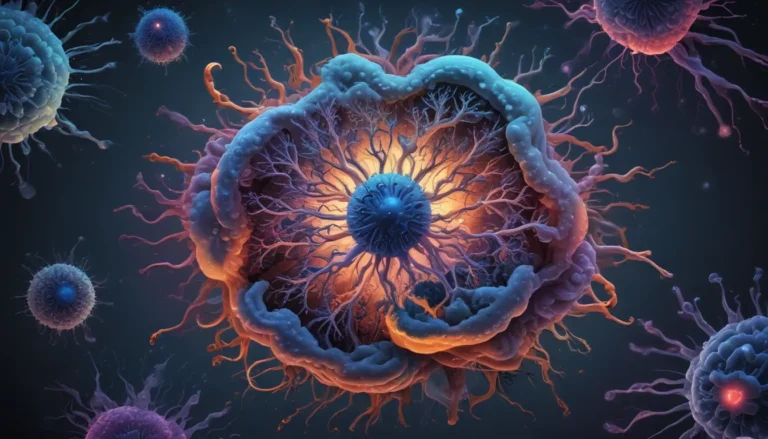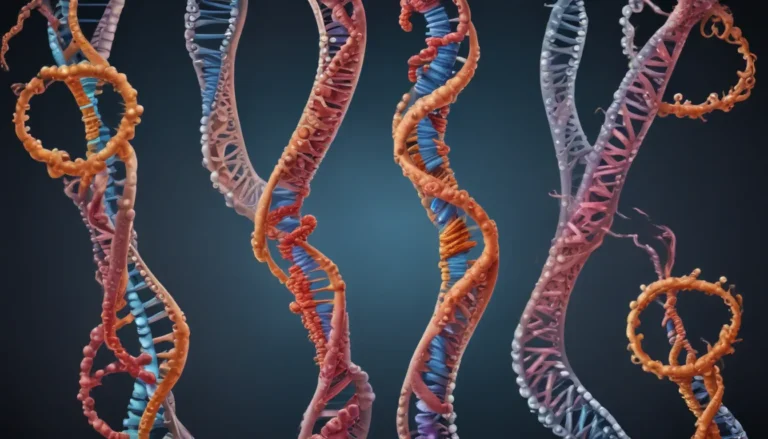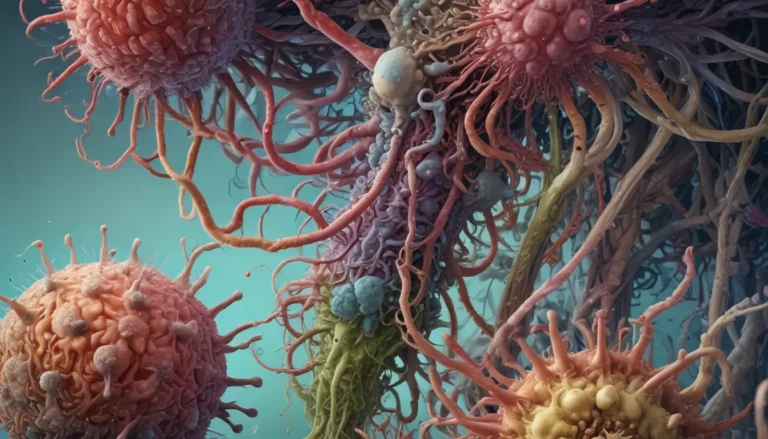A Note About Images: The images used in our articles are for illustration purposes only and may not exactly match the content. They are meant to engage readers, but the text should be relied upon for accurate information.
Do you ever wonder about the intricate mechanisms that keep our cells healthy and functioning properly? Enter the world of proteasome degradation, a vital process that plays a significant role in maintaining cellular homeostasis and regulating key biological processes. While the concept of proteasome degradation may seem complex, its importance cannot be overstated. From preventing diseases to influencing gene expression, proteasome degradation is truly a superhero within our cells.
The Proteasome: A Cellular Waste Disposal System
At the heart of proteasome degradation lies the proteasome itself, a complex protein structure present in all eukaryotic cells. Acting as a cell’s waste disposal system, the proteasome is responsible for degrading unwanted or damaged proteins to ensure cellular balance and functionality.
Ensuring Protein Quality Control
One of the key functions of the proteasome is to maintain protein quality control by selectively targeting misfolded or damaged proteins for degradation. This crucial role helps prevent the accumulation of abnormal proteins that can lead to cellular dysfunction and various diseases, including neurodegenerative disorders.
From Regulatory Proteins to Antigen Presentation
Beyond targeting misfolded proteins, the proteasome also plays a role in degrading regulatory proteins involved in essential cellular processes such as cell cycle control, DNA repair, apoptosis, and immune response. Moreover, the proteasome is intricately involved in the antigen presentation pathway, aiding in the recognition and elimination of infected or cancerous cells by immune cells.
The Mark of Ubiquitin
Proteins earmarked for degradation by the proteasome bear a small protein tag known as ubiquitin. This molecular tag serves as a signal for the proteasome to identify and degrade the marked protein efficiently.
Catalytic Diversity Within the Proteasome
Comprising multiple subunits, each with distinct functions, the proteasome houses catalytic sites known as proteolytic cores where protein degradation takes place. These cores boast different enzymatic activities, enabling the efficient breakdown of a wide array of protein substrates.
Implications in DNA Repair and Diseases
Delving deeper, the proteasome’s involvement extends to DNA repair processes by degrading proteins that hinder DNA repair mechanisms, thus safeguarding genome integrity. Alternatively, dysfunction in proteasome degradation has been linked to various diseases, including neurodegenerative disorders, cancer, autoimmune diseases, and inflammatory conditions.
Unveiling the Regulators: Ubiquitin Ligases
Ubiquitin ligases, enzymes responsible for attaching ubiquitin molecules to proteins, play a pivotal role in overseeing proteasome activity. These ligases regulate proteasome function and ensure timely degradation of specific proteins.
Beyond Short-Lived Proteins: Proteasome’s Versatility
While the proteasome primarily targets short-lived proteins for degradation, it also tackles long-lived proteins that have undergone post-translational modifications or have become irreparably damaged. This dynamic capability aids in maintaining protein balance and turnover within the cell.
Adapting to Cellular Stress
Under conditions of cellular stress, such as oxidative stress or heat shock, the proteasome can adapt by upregulating its activity to meet the increased demand for protein degradation. This adaptive response is crucial for maintaining cellular proteostasis and survival.
A Player in Cell Division and Quality Control
Ensuring accurate cell division, the proteasome aids in degrading proteins involved in cell cycle regulation and mitotic spindle formation. Moreover, it plays a pivotal role in maintaining cellular quality control by recognizing and degrading mislocalized or aggregated proteins.
Exploring Proteasome Variants and Functions
Diverse types of proteasomes are found in various cellular compartments, each with specialized functions and substrate preferences. These unique variants allow for precise control of protein degradation in specific cellular locations.
Conclusion: Unlocking the Mysteries of Proteasome Degradation
In conclusion, proteasome degradation stands as a captivating and essential process within cellular biology. With its multifaceted roles in maintaining cellular balance, controlling protein quality, and regulating essential cellular processes, the proteasome continues to be a focal point of research and discovery.
FAQs: Answering Your Burning Questions
-
What is proteasome degradation?
Proteasome degradation is the selective destruction of damaged, misfolded, or unneeded proteins by the proteasome, a cellular machinery. -
How does the proteasome function?
The proteasome, a complex molecular machine, works through multiple subunits to recognize, unfold, and degrade proteins into smaller peptides. -
What is the significance of proteasome degradation?
Proteasome degradation is vital for maintaining cellular homeostasis, regulating protein levels, and eliminating abnormal or unwanted proteins. -
Can proteasome degradation be regulated?
Yes, proteasome degradation is tightly regulated by various cellular mechanisms, including specific tagging of proteins and cellular response pathways. -
Is proteasome degradation involved in diseases?
Dysfunction in proteasome degradation has been linked to diseases such as neurodegenerative disorders and cancer, offering potential therapeutic avenues. -
Are there drugs targeting the proteasome?
Proteasome inhibitors are drugs that target proteasome activity, showing promise in treating certain types of cancer. -
Can proteasome degradation be harnessed for biotechnology applications?
Indeed, proteasome degradation can be utilized in biotechnology for protein engineering and recombinant protein production. -
How does proteasome degradation contribute to cellular quality control?
Proteasome degradation plays a crucial role in cellular quality control by eliminating misfolded or damaged proteins, ensuring cellular health. -
What are recent discoveries in proteasome degradation?
Recent studies have uncovered novel regulatory mechanisms and protein targets in proteasome degradation, advancing our understanding of its function. -
What are some resources to further explore cellular biology?
Explore the realms of molecular biology, embryonic stem cells, and protein structure to uncover more about the intricate world of cellular biology.
As you journey through the expansive world of cellular biology, remember that proteasome degradation unveils a realm of sophistication and significance within our cells. From maintaining cellular balance to influencing gene expression, the proteasome stands as a cornerstone of cellular health and functionality. Delve deeper into the wonders of cellular biology to uncover the complex processes that govern our cellular world.





